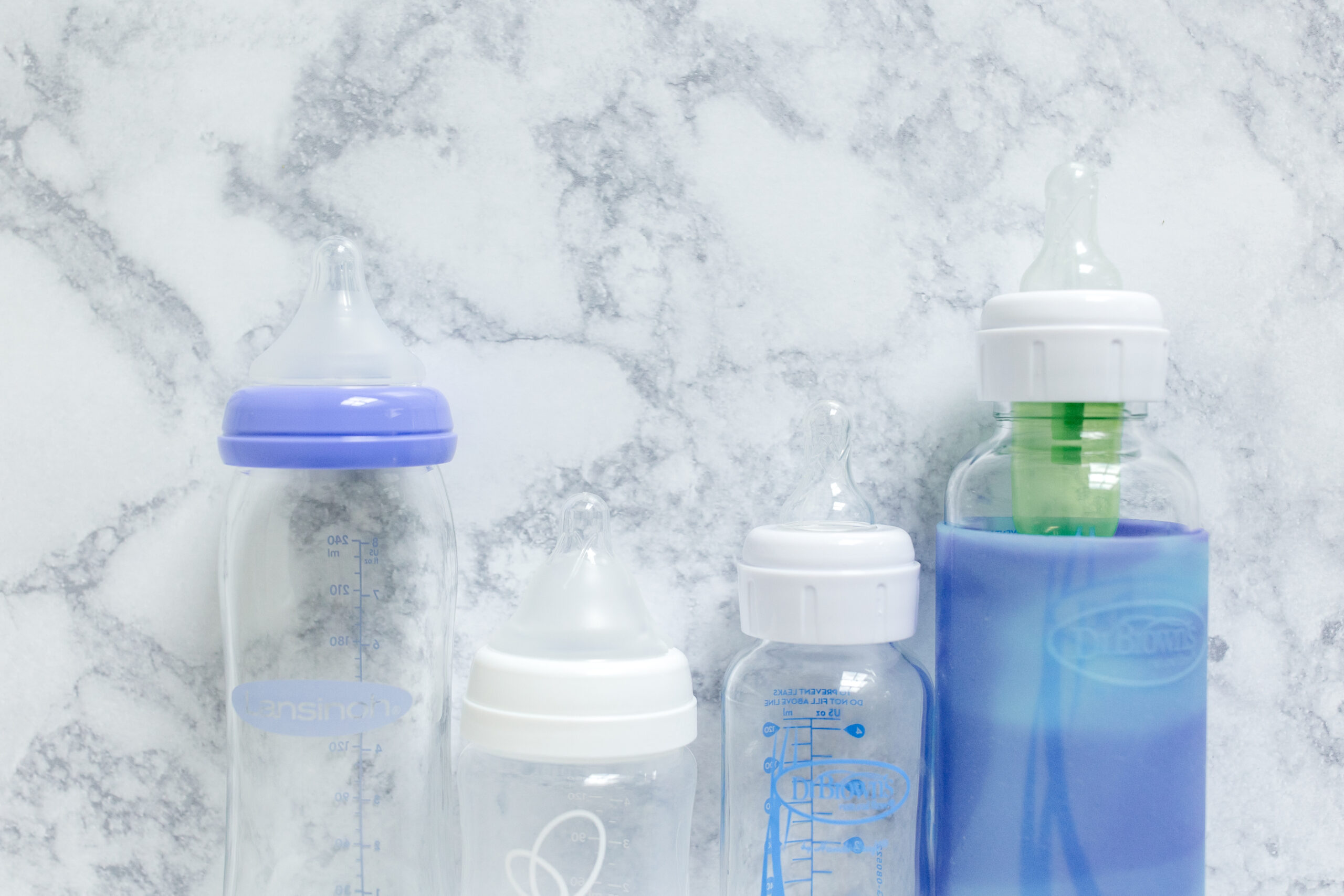Baby food and heavy metals – those two things shouldn’t go together, right? I know what you’re thinking – “Another thing I have to worry about as a parent!?” Yes, unfortunately small amounts of heavy metals are present in many baby foods, pouches and snacks. Don’t panic though, we’ll go through some tips and tricks for minimizing your little one’s exposure.
But first, let’s backup and review what heavy metals are and why avoiding them matters. The dietitian on the Eat Play Say team helped me to bring all the facts together!
What are Heavy Metals?
Heavy metals naturally occur on the planet and are found in water, soil and the air.
Five of the majorly concerning ones are lead, cadmium, mercury, arsenic and chromium.
Their presence in contaminated water and soil can lead to them ending up in the foods that are grown with that soil and water. Foods that grow in the soil (think root vegetables such as potatoes, beets, cassava root and carrots) tend to be higher in heavy metals because the metals can accumulate in a plant’s root system. Heavy metals can also get into food from pesticides, industrial processing, and storage. (1)
So, why does this matter for your baby? Well, although everyone should be cautious of their heavy metals exposure, it is even more important for babies because they are more vulnerable to the negative health consequences “due to their smaller size and developing brains and organ systems,” says James E. Rogers, P.D., Director of Food Safety Research and Testing at Consumer Reports.
Babies’ bodies also absorb more of the heavy metals that they ingest than adults do.
According to the WHO, young children absorb 4-5 times as much ingested lead as adults. (2)
Why Heavy Metals are “Bad” For Us
For example, a study followed over 500 children who grew up in the era of leaded gasoline. They found that for each 5-microgram increase in childhood blood lead levels, a child’s IQ went down by around 1.5 points in adulthood. (4)
A Consumer Reports study done on heavy metals in apple juice stated that, “The harmful effects of heavy metals are well-documented. Depending on how long children are exposed to these toxins and how much they are exposed to, they may be at risk for lowered IQ, behavioral problems (such as attention deficit hyperactivity disorder), type 2 diabetes, and cancer, among other health issues.” (5)
Which foods contain the most heavy metals?
Organic vs. Non-Organic
First thing to know is that heavy metals do NOT discriminate between organic and non-organic crops. So, even though buying organic is beneficial for other reasons, it is not necessarily going to reduce heavy metal exposure.
The Test Results
Next, some foods are more likely to have higher levels of heavy metals in them than others. Consumer Reports has done multiple rounds of testing on a wide variety of popular baby foods and snacks.
One of Consumer Reports most recent studies tested 14 products and they then used those results to determine a safe number of servings a child could eat per day. Products made with sweet potatoes and rice scored the worst. (6) Another report found elevated levels of arsenic and lead in apple and grape juices, specifically. (5)
Consumer Reports Heavy Metal Testing Standards
You may be wondering how Consumer Reports decides how much lead is too much since there are no limits set by the FDA. They measured lead in a percentage of California’s maximum allowable dose level (MADL) since these standards are the best available. The serving size that CR recommends for a child is based off of how much they can eat before exceeding this level.
Are There “Safe Limits” for Heaby Metals Set By the Government?
Consumer Reports designates their own concerning levels of heavy metals because there are no real limits set by the FDA for heavy metal contamination in baby food.
Consumer Reports’ levels tend to be more conservative because they are concerned with the levels being health protective above all else, whereas the governing agencies take into consideration the feasibility of the industry to get to the set level without extreme cost to the industry. Consumer Reports does not consider feasibility – baby health is number one priority to them despite whether the levels are feasible or not.
The FDA has set limits for heavy metals in just infant rice cereal and juice.
The limit of inorganic arsenic in infant rice cereal is 100 parts per billion and in apple juice it is 10 parts per billion. The FDA could choose to remove a product from the market if it exceeds these levels. The FDA is currently working towards further reduction of heavy metals in baby foods with its long term Closer to Zero plan. This plan has a timeline laid out for when the agency will have limits set for popular baby foods, with the first target set for December 2024.
Additionally, The Baby Food Safety Act of 2024 was introduced earlier this year. This bill would give the FDA the authority to enforce limits on heavy metals in baby and toddler food and would set standards for testing the final food products in addition to monitoring these standards. Even more importantly, it would give the FDA authority to enforce the limits it sets by allowing them to require companies to recall foods that don’t meet the standards in contrast to the voluntary recalls that are the standard now.
That’s a lot of information to process! So what do you do??
How to Minimize Baby’s Heavy Metal Exposure:
-
Do your own research! Just because something is for sale does not mean it’s safe for your baby.
-
Feed your baby a variety of food from a variety of sources. It’s probably not a great idea to feed your baby 3 servings of the same snack puffs or pouch from the same brand every day, just like it’s best to not serve them cubed sweet potatoes for every meal, every day knowing that is one of the foods that naturally contains higher doses of heavy metals.
-
Keep prepackaged foods and snacks to a minimum and emphasize whole, fresh foods. Save the super convenient pouches, puffs, etc for instances when you really need to rely on them and don’t make them your go-to snack.
-
Skip the juice or opt for juice in very small amounts for babies over 1 year old – a consumer reports study found the highest average levels of heavy metals in grape juice and juice blends. (5)
-
Avoid rice-based baby foods and snacks – rice tends to readily absorb arsenic so these processed baby food products that have concentrated sources of rice can have high levels of arsenic. Rice cereal is recommended by most pediatricians as a first weaning food for baby because it is fortified with iron, but there are many other ways to give your baby iron, such as a meat puree, or you can offer a different baby cereal such as oatmeal.
-
Minimize or avoid cassava based food products. If you’re going to feed your baby cassava based products, make sure you stay at or below the serving size and keep these products on a rotation instead of being the “go-to” snack.
-
Serving size matters – many of these foods contain “safe” levels of heavy metals when the serving size is consumed. The problem is that these “snacky” foods such as puffs and teething biscuits, are easily overeaten with 2 or 3 serving sizes easily consumed at once, especially for an older toddler.
-
Don’t eliminate whole foods that may contain heavy metals, instead serve them in rotation alongside a variety of other foods. Root veggies such as carrots and sweet potatoes, fresh cassava and rice are nutritious foods that provide essential vitamins and minerals for your baby. The processing of these foods into baby food products tends to increase their heavy metal content.
-
Peeling sweet potatoes and carrots can lower their heavy metal content.
-
Rinsing rice thoroughly and cooking in a lot of water (and then draining off excess water) can reduce the amount of arsenic present. White basmati and sushi rice tend to have the lowest amounts of arsenic.
-
Dietary intake of heavy metals is just one source of heavy metal exposure. The health effects of heavy metal exposure are cumulative so it is important to consider all the ways in which your family may be exposed and reduce exposure in all areas possible.
Remember what I always say: Do the best you can with the information you have!
Try to take this information and use it to help you make better, more informed, choices for your family. You’re doing great!
Starting solids?
We’ve got you completely covered:







